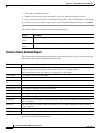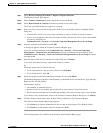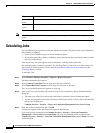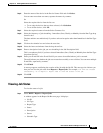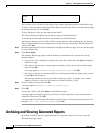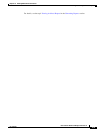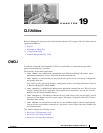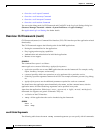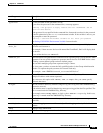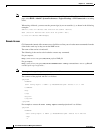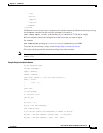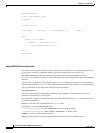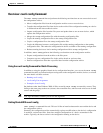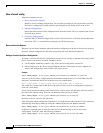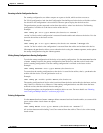
19-2
User Guide for Resource Manager Essentials 4.1
OL-11714-01
Chapter 19 CLI Utilities
CWCLI
• Overview: cwcli export Command
• Overview: cwcli inventory Command
• Overview: cwcli invreport Command
• Overview: cwcli netshow Command
You can set the debug mode for CLIFramework and ConfigCLI in the Log Level Settings dialog box
(Resource Manager Essentials > Admin > System Preferences > Loglevel Settings).
See Application Log Level Settings for further details.
Overview: CLI Framework (cwcli)
CLI Framework (cwcli) is a Command-Line Interface (CLI). This interface provides application-related
functionality.
The CLI Framework supports the following tasks for the RME applications:
• Parsing the command line for the applications.
• Easy logging and messaging capabilities
• Authentication and authorization for individual applications
• Remote access support.
SYNOPSIS
The command line syntax is as follows:
cwcli application command GlobalArgs AppSpecificArguments
• application specifies one or more RME applications that use the framework. For example, config,
export, inventory, invreport, and netconfig.
• command specifies which core operations are to be performed for a particular service.
• GlobalArgs specifies arguments common for all CLI. For example, username, password, log, debug,
etc.
• AppSpecificArguments are the additional parameters required for each core command.
You should enter the application name immediately after cwcli and the command name, after the
application name. All other GlobalArgs arguments can be specified in any order.
Apart from the applications, Global args (-u user, -p password, -l logfile, -m email, -d debuglevel)
framework also supports two generic commands. They are:
• -v—Version of the CLI interface.
• -help—All the applications that can be invoked using the framework.
SYNTAX
cwcli –v
cwcli –help
cwcli Global Arguments
The following table shows the cwcli config command arguments you can specify with all commands.



